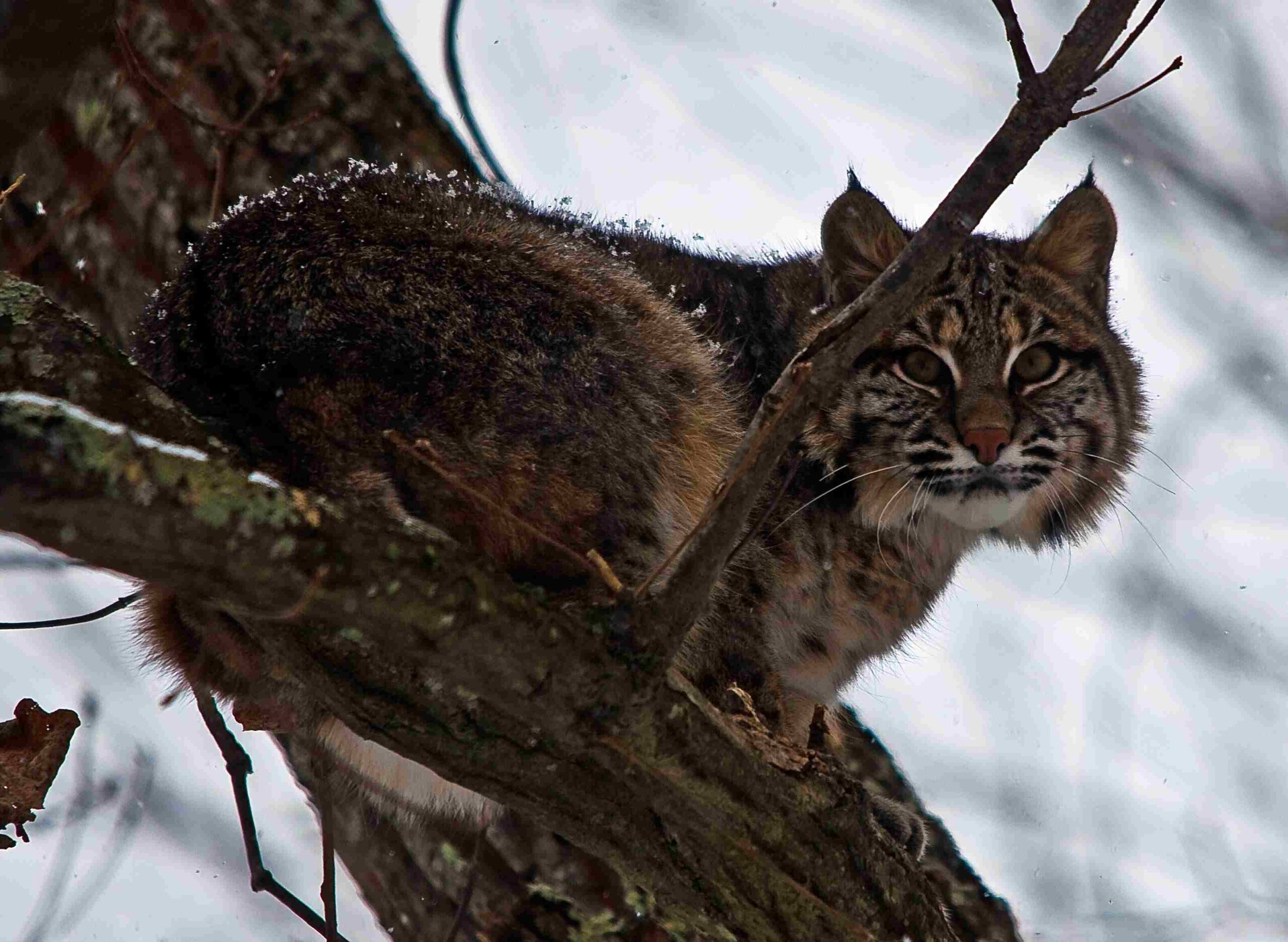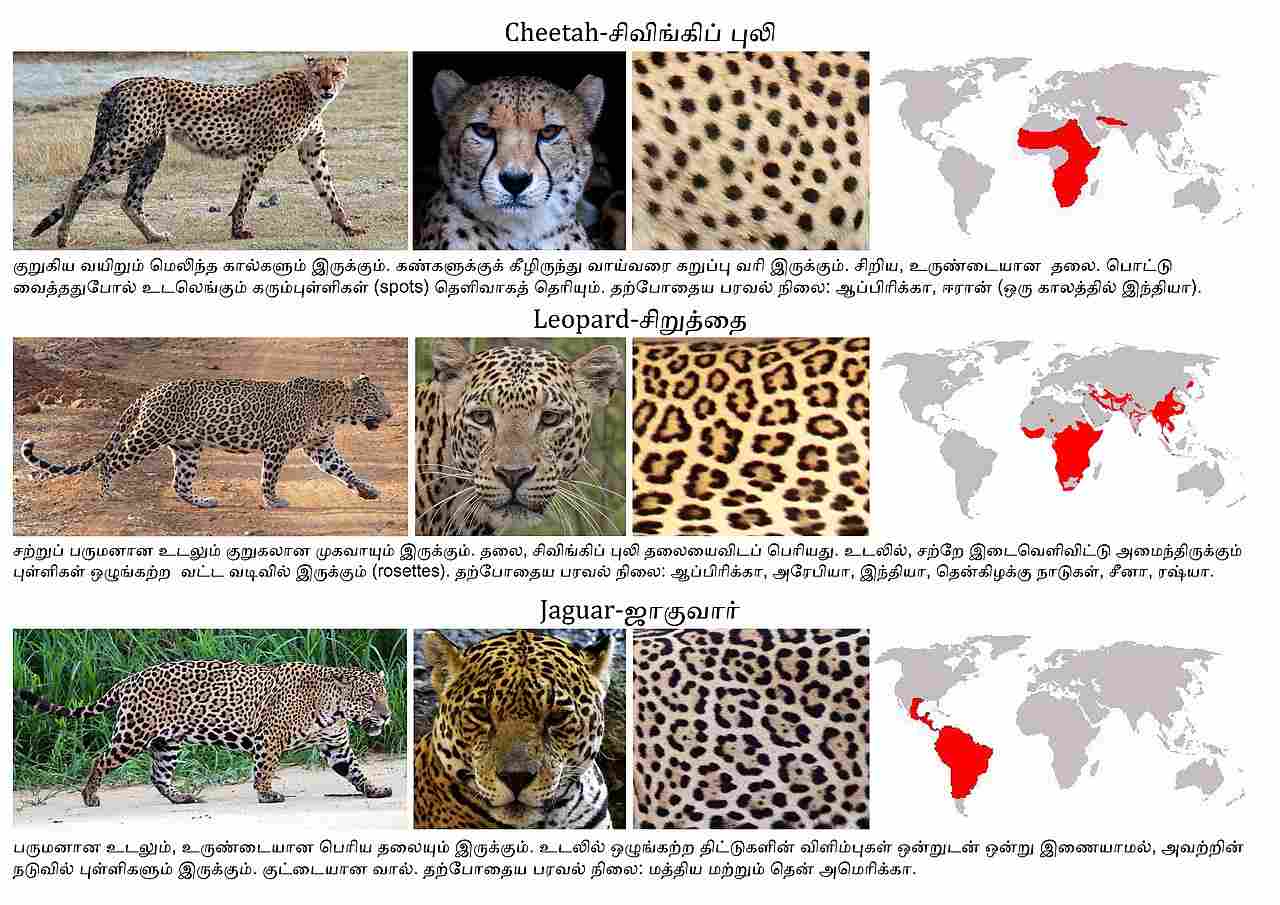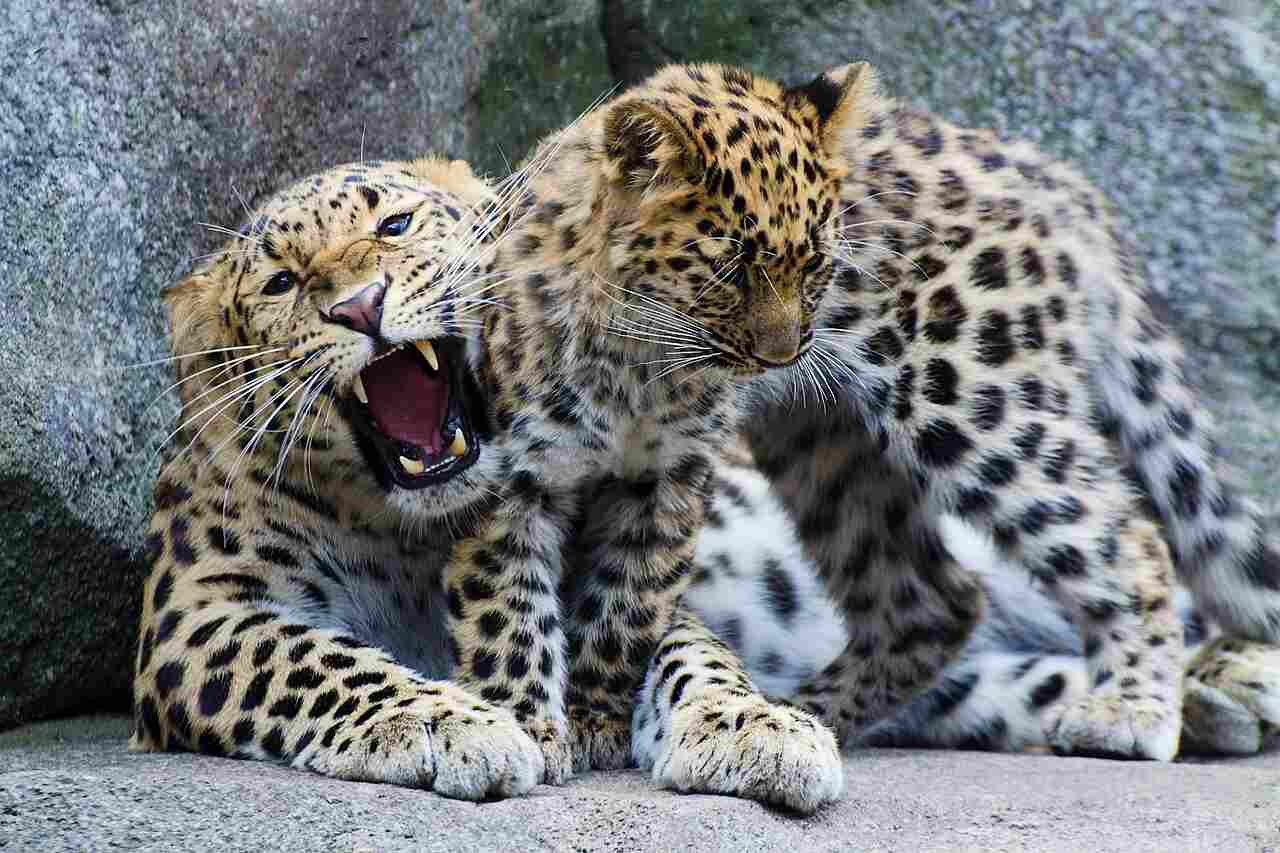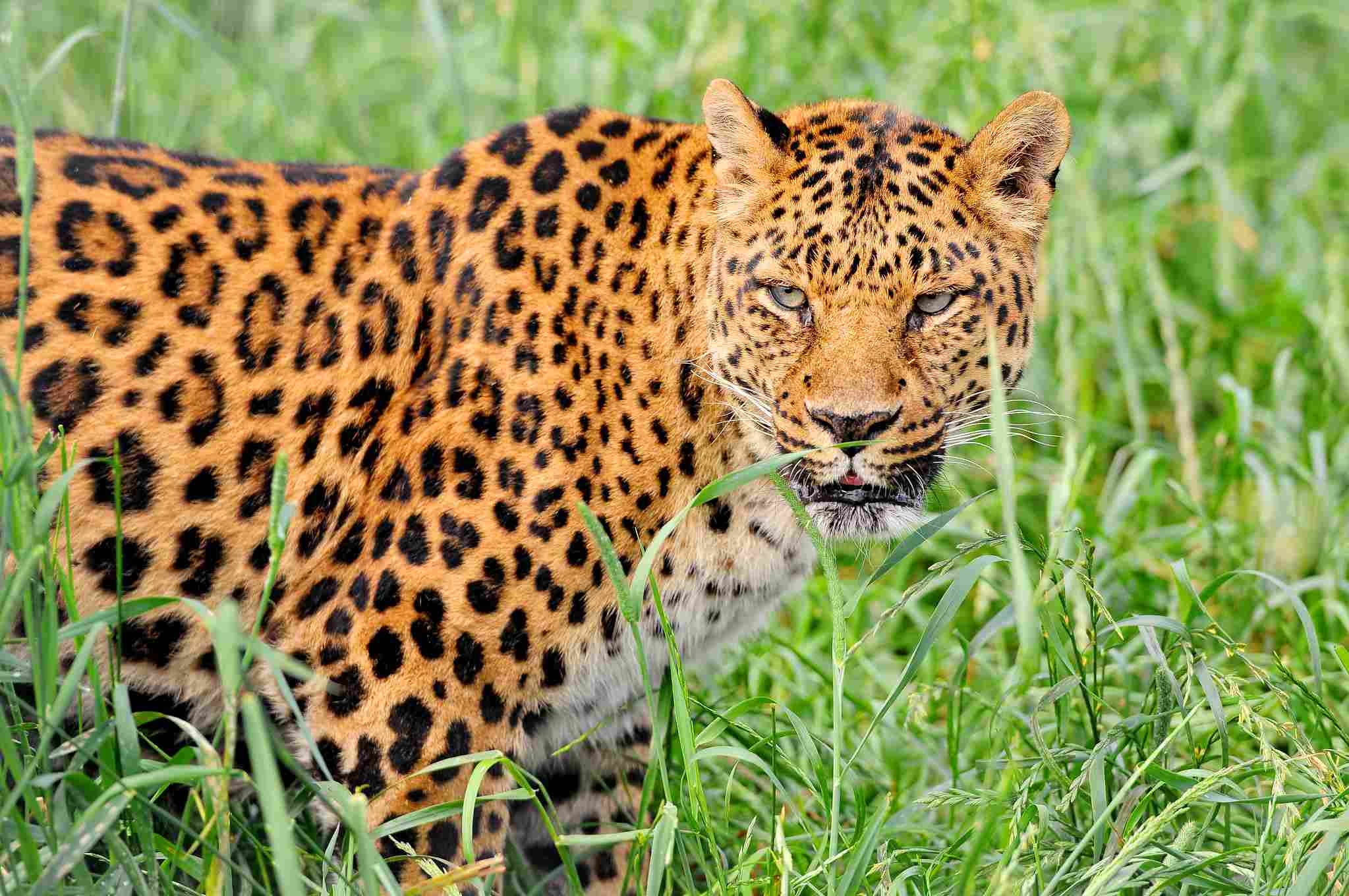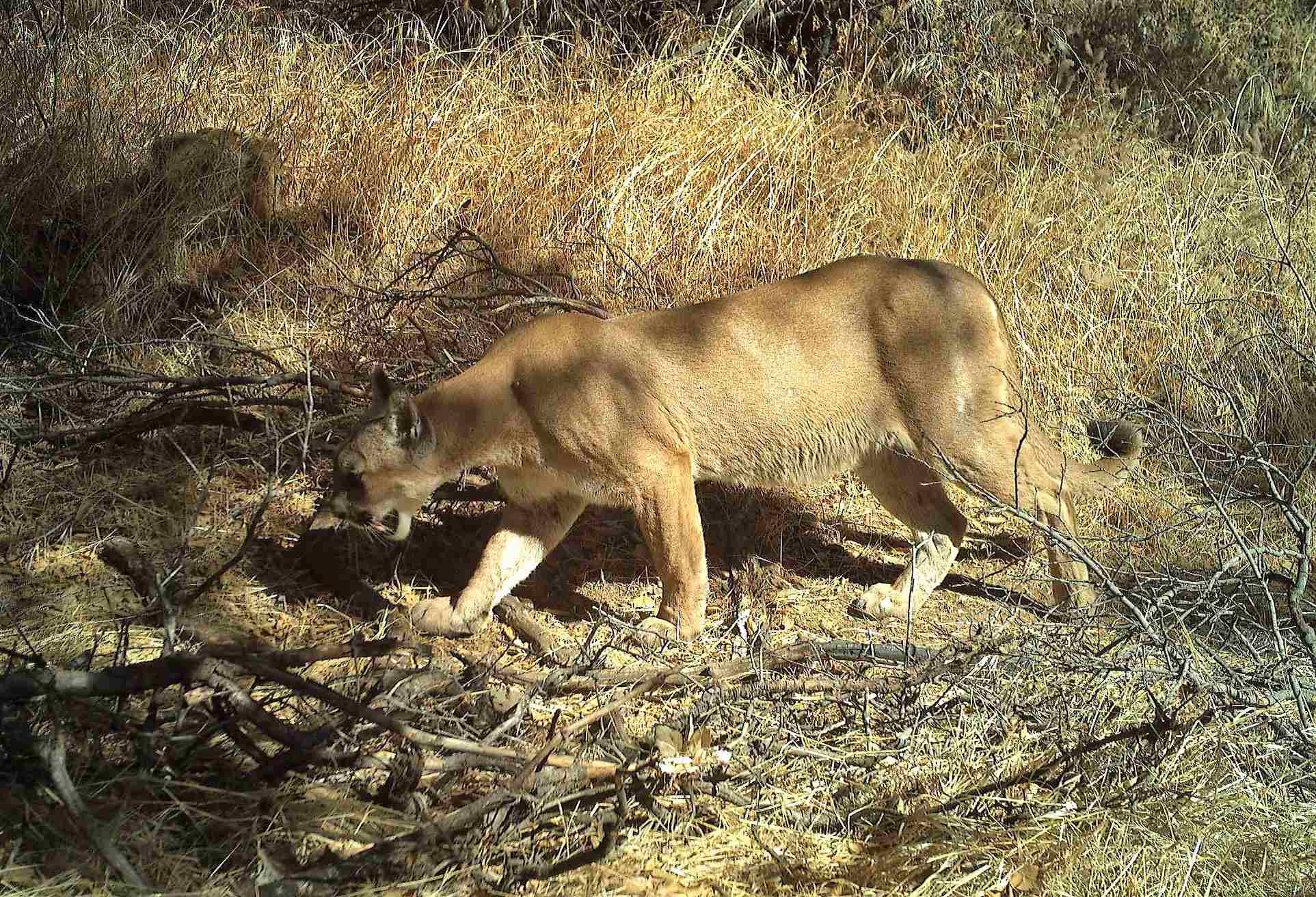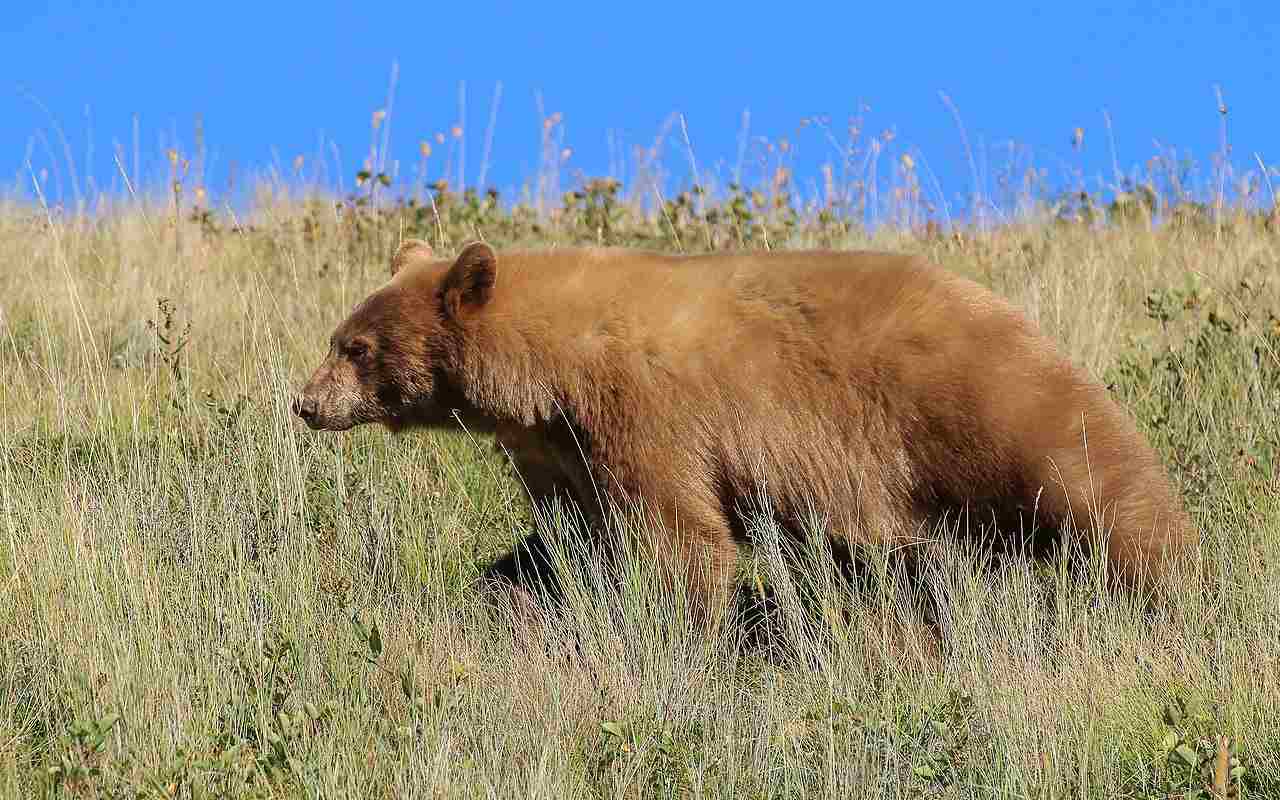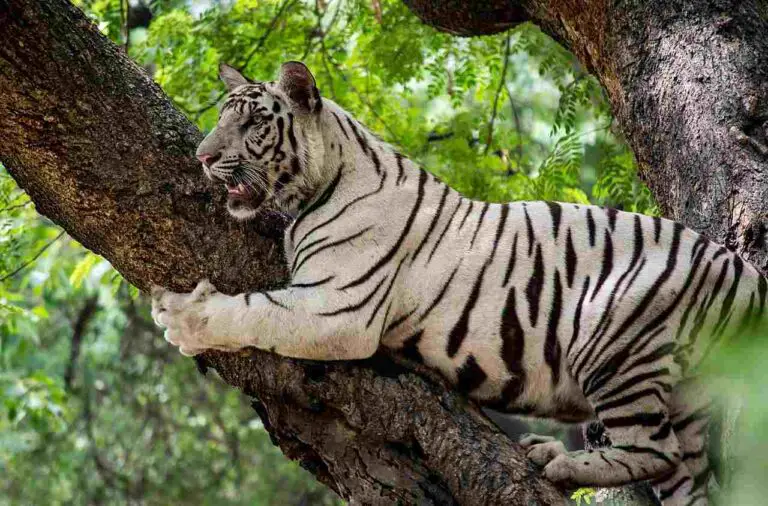Leopard Vs Cougar Size, Weight, Ecological Comparison
A cougar has the advantage over a leopard in terms of size and weight, making it more likely to win in a fight. However, if the leopard is equally sized or larger, it can overpower the cougar due to its pound-for-pound strength.
In this article, we will compare the two predators based on factors such as taxonomy, appearance, size, weight, speed and agility, bite force, overall physical capacity, habitat, lifespan, behavior, reproduction, danger posed to humans, intelligence, tracks, and conservation status. By examining these aspects, we can determine which predator holds the upper hand in a physical confrontation.
Reasons Why a Cougar Will Win a Leopard In a Fight/Physical Confrontation
I). Size and Weight Advantage
One of the main reasons why a cougar has the upper hand in a fight against a leopard is its size and weight advantage. Cougars are generally larger and heavier than leopards, giving them a physical advantage in a confrontation. With an average length of 7 to 9 feet and weighing between 100 to 200 pounds, cougars are formidable predators. On the other hand, leopards typically measure around 4 to 6 feet in length and weigh between 60 to 130 pounds.
The larger size and weight of cougars provide them with more power and strength, allowing them to overpower their opponents. In a physical confrontation, the cougar’s size advantage enables it to deliver more forceful blows and strikes. This can be crucial in gaining the upper hand and subduing the opponent. Additionally, the increased weight of the cougar gives it more stability and balance, making it harder for the leopard to knock it off balance or overpower it.
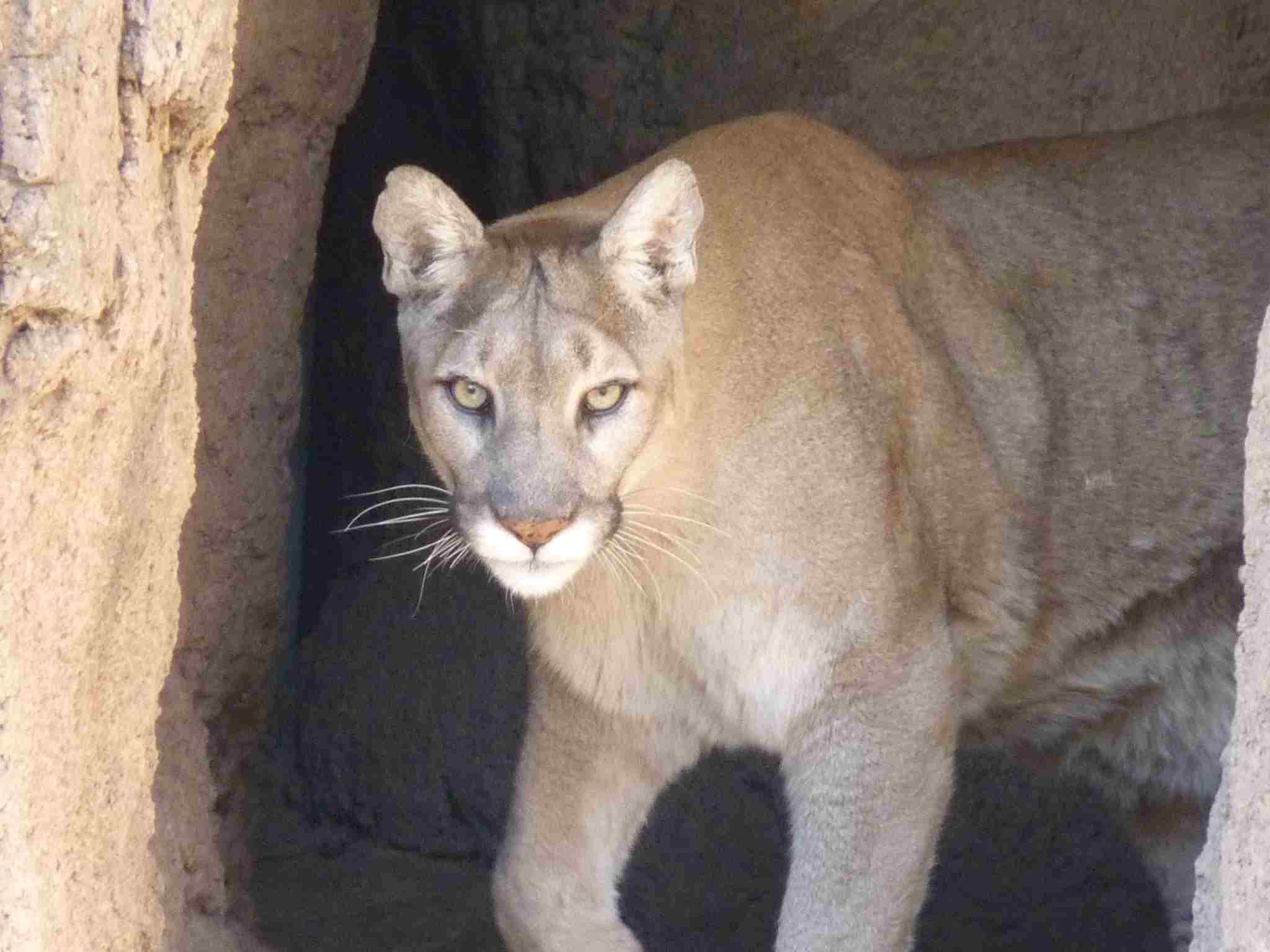
II). Possession of Strong, Clawed Forelimbs
Another reason why a cougar is more likely to win in a fight against a leopard is its possession of strong, clawed forelimbs. Cougars have powerful forelimbs with sharp retractable claws that they use for hunting and self-defense. These claws can inflict deep wounds and cause significant damage to their opponents.
The strong, clawed forelimbs of cougars give them an advantage in close combat situations. They can use their claws to swipe at their opponents, causing injuries and impairing their ability to fight back effectively. The sharp claws also aid in gripping and holding onto prey or adversaries, giving the cougar an advantage in maintaining control during a fight.
Therefore, the size and weight advantages, along with the possession of strong, clawed forelimbs, make a cougar more likely to win in a fight against a leopard. These physical attributes provide the cougar with greater power, strength, and control, giving it the upper hand in a physical confrontation.
*Details of Comparison
1). Taxonomy
The taxonomy of the leopard (Panthera pardus) and the cougar (Puma concolor) reveals interesting similarities and differences between these two big cats. Both belong to the Felidae family, but they are classified under different genera and species. The leopard falls under the Panthera genus and the P. pardus species, while the cougar is classified under the Puma genus and the P. concolor species.
Despite their taxonomic differences, a comparison of these animals reveals some intriguing similarities. Both the leopard and the cougar are large, powerful predators with muscular bodies and sharp claws. They are known for their stealth and agility, making them formidable hunters in their respective habitats.
However, there are also distinct differences between the two. The leopard is native to Africa and parts of Asia, while the cougar is found in the Americas. The leopard is known for its distinctive rosette-patterned coat, which provides excellent camouflage in its forested habitats. On the other hand, the cougar has a solid tan or brown coat, allowing it to blend into its mountainous and forested environments.
2). Appearance
The appearance of the leopard and the cougar showcases distinct characteristics that set them apart. Starting with their coats, both big cats have unique fur patterns that aid in their survival. The leopard’s coat is adorned with rosette-shaped spots, providing excellent camouflage in its forested habitats. On the other hand, the cougar boasts a solid tan or brown coat, allowing it to blend seamlessly into its mountainous and forested environments.
In terms of stature and build, the leopard and the cougar exhibit slight differences. The leopard has a more compact and muscular body, with a stocky build that aids in its climbing and hunting abilities. In contrast, the cougar possesses a more elongated and slender physique, which contributes to its exceptional agility and leaping prowess.
When comparing the two animals, it becomes evident that their appearances have evolved to suit their respective habitats and hunting strategies. The leopard’s rosette-patterned coat enables it to blend into the dappled light and shadows of the dense forests it inhabits. Conversely, the cougar’s solid coat allows it to seamlessly merge with the rocky terrain and dense vegetation of its mountainous habitats.
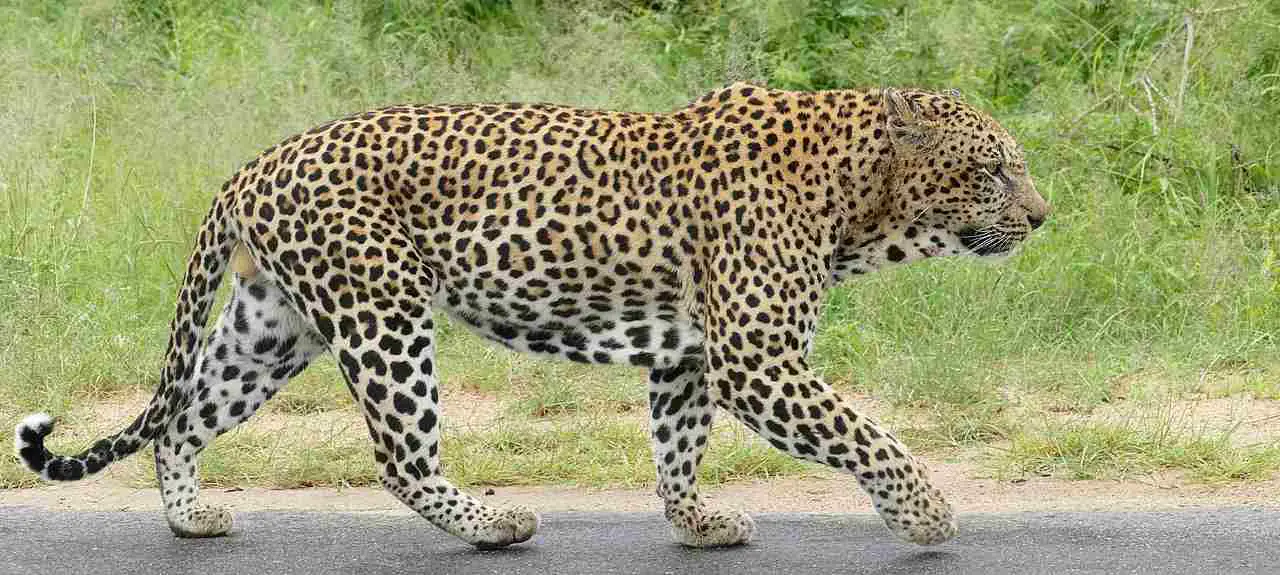
3). Size
When comparing the size of the leopard and the cougar, it is important to consider their total body length and height at the shoulders. The leopard typically measures between 4.5 to 6.2 feet in length, with males being larger than females. In contrast, the cougar is slightly longer, ranging from 5 to 9 feet in length.
In terms of height at the shoulders, the leopard stands at around 2 to 2.6 feet, while the cougar measures slightly taller at 2.3 to 2.8 feet.
These size differences between the two big cats can be attributed to their respective habitats and hunting strategies. The leopard’s compact and muscular body allows it to navigate through dense forests and climb trees with ease. On the other hand, the cougar’s elongated and slender physique enables it to move swiftly across its mountainous terrain and make impressive leaps.
While the leopard may be smaller in size compared to the cougar, it compensates with its agility and climbing abilities. The cougar, with its larger size, possesses a greater advantage when it comes to overpowering its prey.
4). Weight
When comparing the weight of the leopard and the cougar, it is evident that the cougar outweighs the leopard. The average weight of a leopard ranges from 66 to 176 pounds, with males being larger and heavier than females. In contrast, the cougar is significantly heavier, with an average weight ranging from 110 to 200 pounds.
The difference in weight between these two big cats can be attributed to their respective habitats and hunting behaviors. Leopards are known for their agility and ability to climb trees, which requires a more compact and muscular body. This allows them to navigate through dense forests and ambush their prey. On the other hand, cougars are adapted to their mountainous terrain and rely on their strength and power to overpower their prey.
The weight advantage of the cougar gives it an edge in terms of hunting and capturing larger prey. With its larger size and strength, the cougar is capable of taking down animals such as deer and elk. However, the leopard compensates for its smaller size with its agility and stealth, allowing it to hunt and take down smaller prey with precision.
5). Speed and Agility
The leopard is renowned for its incredible agility and speed. With its muscular build and flexible body, it can reach speeds of up to 36 miles per hour (58 kilometers per hour) in short bursts. This allows the leopard to swiftly chase down its prey and navigate through its dense forest habitat with ease. Its ability to change direction quickly and climb trees adds to its agility, making it a formidable predator.
On the other hand, the cougar is known for its remarkable speed and endurance. It can reach speeds of up to 50 miles per hour (80 kilometers per hour) in short sprints, making it one of the fastest land animals. The cougar’s long and lean body, coupled with its powerful hind legs, enables it to cover long distances while hunting. Its agility is evident in its ability to leap up to 20 feet (6 meters) horizontally and 15 feet (4.5 meters) vertically.
In terms of speed, the cougar has a slight advantage over the leopard. However, the leopard’s exceptional agility and climbing abilities give it an edge in certain environments. Both big cats are highly skilled hunters, utilizing their speed and agility to capture their prey effectively.
6). Bite Force
The bite force of a leopard is estimated to be around 300 to 310 psi, while the cougar’s bite force ranges from 350 to 450 psi. This indicates that the cougar has a slightly stronger bite compared to the leopard.
The powerful bite force of the cougar is attributed to its large jaw muscles and sharp, retractable claws. These adaptations allow the cougar to effectively capture and subdue its prey, which often includes large ungulates such as deer. With its strong bite, the cougar can deliver a fatal bite to the neck or throat of its prey, quickly immobilizing it.
On the other hand, the leopard’s bite force is still formidable and sufficient for its hunting needs. With its sharp teeth and strong jaw muscles, the leopard can deliver a powerful bite to its prey, targeting vital areas such as the throat or skull. This enables the leopard to swiftly dispatch its prey and secure its meal.
7). Overall Physical Capacity (Which is Stronger?)
When comparing the overall physical capacity of the cougar and the leopard, it is important to consider various factors that we have evaluated and compared. While both animals possess impressive strength and agility, there are certain aspects that give the cougar an edge in terms of overall physical capacity.
Firstly, size and weight play a significant role in determining strength. The cougar, being larger and heavier than the leopard, has a clear advantage in terms of sheer power. With its muscular build and robust physique, the cougar possesses the ability to overpower its prey and potential adversaries.
In a violent confrontation between the two, the cougar’s size and weight would likely give it the upper hand, potentially leading to the demise of the leopard. However, it is important to note that the outcome of such encounters can also be influenced by other factors such as agility, speed, and hunting techniques.
In terms of agility, both the cougar and the leopard are highly skilled climbers and adept at navigating their respective habitats. However, the cougar’s larger size does not hinder its agility, allowing it to swiftly maneuver through trees and rocky terrains.
Therefore, while the leopard possesses its own set of impressive physical attributes, the overall physical capacity of the cougar surpasses that of the leopard due to its size and weight advantage.
8). Habitat
Both the cougar and the leopard are highly adaptable predators that can thrive in a variety of ecosystems. However, their geographic ranges differ significantly. The cougar is found primarily in the Americas, ranging from the southern tip of South America to the northern regions of North America. On the other hand, the leopard is native to Africa and parts of Asia, including countries like India and China.
In terms of specific habitats, cougars are known to inhabit a wide range of environments, including forests, mountains, and even deserts. They are highly adaptable and can survive in both dense vegetation and open landscapes. Leopards, on the other hand, are more commonly associated with dense forests and savannahs, although they can also be found in other habitats such as grasslands and rocky areas.
The differences in geographic range and habitat preferences can be attributed to various factors, including historical distribution, prey availability, and competition with other species. These factors have shaped the evolution and adaptation of both the cougar and the leopard to their respective environments.
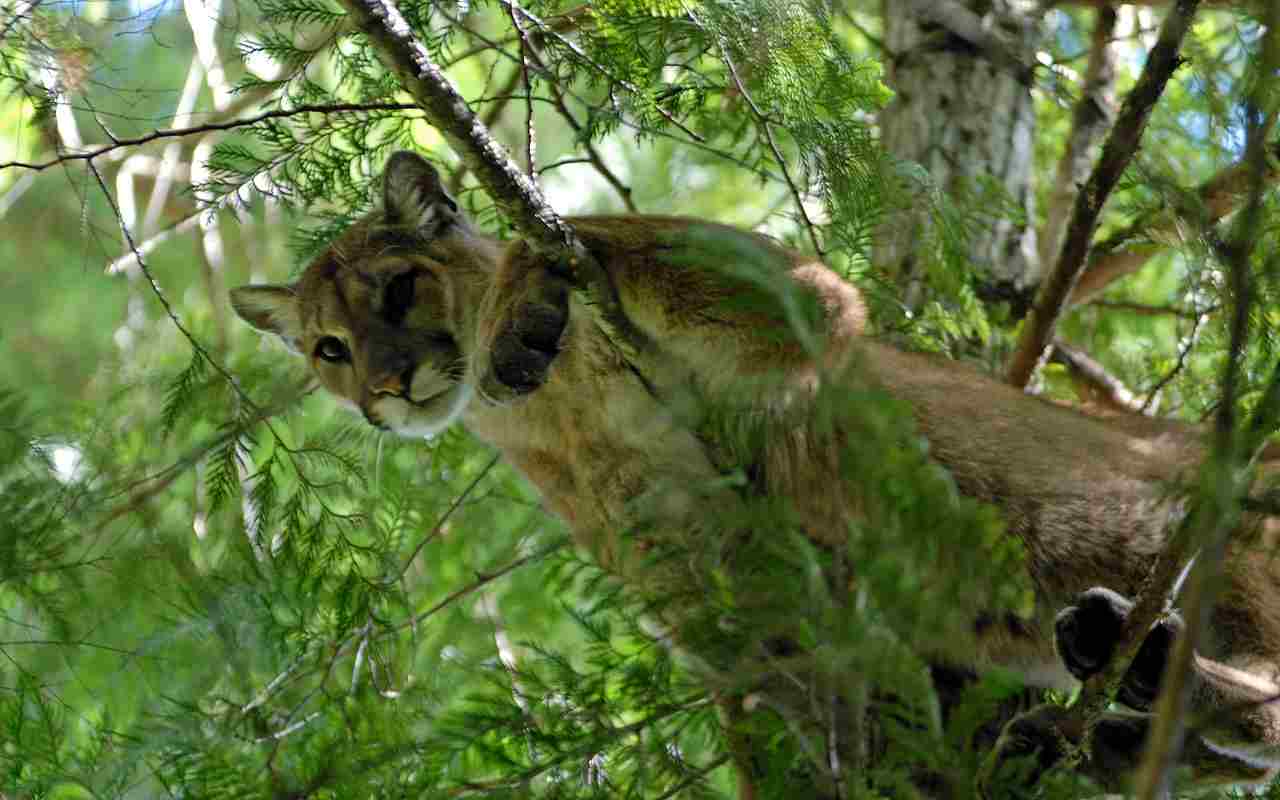
9). Lifespan
Cougars, also known as mountain lions or pumas, have an average lifespan of around 8 to 13 years in the wild. However, some individuals have been known to live up to 20 years or more. The lifespan of cougars can be influenced by factors such as habitat quality, availability of prey, and competition with other predators.
Leopards, on the other hand, have a slightly shorter average lifespan of around 12 to 15 years in the wild. However, like cougars, some leopards have been recorded to live beyond 20 years. The lifespan of leopards can be affected by factors such as habitat fragmentation, human-wildlife conflict, and poaching.
It is worth noting that the lifespan of both cougars and leopards can be significantly longer in captivity, where they are protected from many of the threats they face in the wild. In captivity, cougars can live up to 20 years or more, while leopards can live up to 25 years or more.
In general, while there may be some variation in lifespan between cougars and leopards, both species have relatively long lifespans and can live well into their teens in the wild. Factors such as habitat quality, prey availability, and human impacts play a crucial role in determining the lifespan of these predators.
10). Behavior
When comparing the behavior of cougars and leopards, several key aspects come into play. One significant difference lies in their feeding habits. Cougars are known to be solitary hunters, preferring to ambush their prey and feed alone. On the other hand, leopards are also solitary hunters but have been observed to drag their kills up into trees to protect them from scavengers.
Aggression is another behavioral characteristic that sets these two big cats apart. Cougars are generally more aggressive and territorial, often defending their hunting grounds from other predators. Leopards, while also territorial, tend to be more adaptable and can coexist with other predators in the same area.
Vocalization is an important aspect of communication for both species. Cougars produce a range of vocalizations, including growls, hisses, and screams, which they use to communicate with other cougars and establish territory. Leopards, on the other hand, have a distinctive rasping call known as a “sawing” sound, which they use to communicate with other leopards and potential mates.
In terms of social behavior, cougars are generally more solitary, with minimal social interactions outside of mating. Leopards, while also solitary, have been observed to have more complex social interactions, including scent marking and occasional interactions with other leopards.
When it comes to parenting, both cougars and leopards are attentive mothers. Female cougars raise their cubs alone, providing them with protection and teaching them essential hunting skills. Similarly, female leopards are responsible for raising their cubs, teaching them how to hunt and survive in their environment.
11). Reproduction
Cougars are viviparous, meaning they give birth to live young. The gestation period for cougars is approximately 90 to 96 days. Female cougars typically give birth to a litter of one to six cubs, with two being the average.
Leopards, on the other hand, are also viviparous and give birth to live young. The gestation period for leopards is slightly shorter, ranging from 90 to 105 days. Female leopards usually give birth to a litter of two to four cubs, with three being the average.
In terms of reproductive behavior, both cougars and leopards engage in mating rituals to ensure successful reproduction. Male cougars will mark their territory with urine and vocalizations to attract females. Female cougars will respond to these signals and engage in courtship behavior with the male.
Similarly, male leopards will mark their territory with scent markings and vocalizations to attract females. Female leopards will respond to these signals and engage in courtship behavior with the male.
12). Danger Posed to Humans
Leopards are known to be bolder and more aggressive compared to cougars. They have been known to come close to human settlements, especially in areas where their natural habitat has been encroached upon. In some cases, leopards have even entered villages and attacked livestock or pets.
While cougars are generally more elusive and tend to avoid human contact, there have been instances where they have shown aggression towards humans, especially if they feel threatened or cornered. However, such incidents are relatively rare compared to leopard-human encounters.
In terms of the rate of human deaths caused, leopards have been responsible for a higher number of fatalities compared to cougars. This is partly due to their larger population and their tendency to come into close proximity with humans.
If you encounter a leopard or a cougar in the wild, it is important to take precautions to ensure your safety. Maintain a safe distance, avoid sudden movements, and do not turn your back on the animal. If the animal approaches you, try to make yourself appear larger and make loud noises to deter it. It is also advisable to carry bear spray or other deterrents when venturing into areas where these animals are known to inhabit.
Therefore, while both leopards and cougars can pose a danger to humans, leopards are generally considered to be more dangerous due to their boldness and higher rate of human encounters.
13). Intelligence
Both leopards and cougars are highly intelligent predators. They possess remarkable cognitive abilities that enable them to survive and thrive in their respective habitats. However, it is difficult to determine which of the two is more intelligent as intelligence can be subjective and difficult to measure in animals.
Leopards are known for their adaptability and problem-solving skills. They are capable of learning from their experiences and adjusting their hunting strategies accordingly. Their ability to stalk and ambush their prey with precision requires a certain level of intelligence and strategic thinking.
On the other hand, cougars are also highly intelligent predators. They are skilled hunters and have the ability to assess their surroundings and make quick decisions. Cougars are known for their stealth and patience, which are indicative of their intelligence and ability to adapt to different hunting situations.
In terms of comparing the intelligence of leopards and cougars, it is important to note that intelligence can vary within individuals of the same species. Factors such as environmental conditions, upbringing, and individual experiences can influence an animal’s intelligence.
14). Tracks
When comparing leopards and cougars, one aspect that can provide valuable insights into their behavior and presence in an area is their tracks. The tracks left behind by these two big cats can reveal important information about their size, movement patterns, and territorial range.
Leopard tracks are characterized by their distinctive rosette-shaped paw prints. These prints are usually larger than those of cougars and have a unique pattern that helps identify them. The tracks of leopards often show claw marks, indicating their retractable claws, which they use for climbing trees and gripping their prey.
Cougars, on the other hand, leave tracks that resemble those of domestic cats but on a much larger scale. Their tracks are round and typically lack claw marks, as their claws are non-retractable. The size of cougar tracks can vary depending on the individual’s age and sex, with males generally leaving larger prints than females.
By analyzing the tracks of leopards and cougars, researchers can gather information about their presence in an area, their hunting behavior, and their movement patterns. This data is crucial for conservation efforts and understanding the ecological roles of these magnificent predators.
15). Conservation Status
When considering the conservation status of leopards and cougars, it is important to note that both species face significant challenges in the wild. They are both classified as “endangered” or “threatened” in various regions due to the main threats to their survival.
For leopards, habitat loss and fragmentation are major concerns. As human populations expand and encroach upon their natural habitats, leopards are losing their homes and access to prey. Additionally, illegal hunting and poaching for their beautiful fur and body parts further contribute to their decline.
Cougars, on the other hand, face similar threats. Loss of habitat due to urbanization and deforestation is a significant issue for these big cats. As their natural territories shrink, cougars are forced into closer proximity with humans, leading to conflicts and increased mortality rates. Furthermore, trophy hunting and illegal trade pose additional risks to their populations.
In terms of conservation efforts, both leopards and cougars benefit from protected areas and national parks that aim to preserve their habitats. These areas provide safe havens for these magnificent predators and help mitigate the threats they face. Conservation organizations also play a crucial role in raising awareness, conducting research, and implementing conservation strategies to safeguard these species.
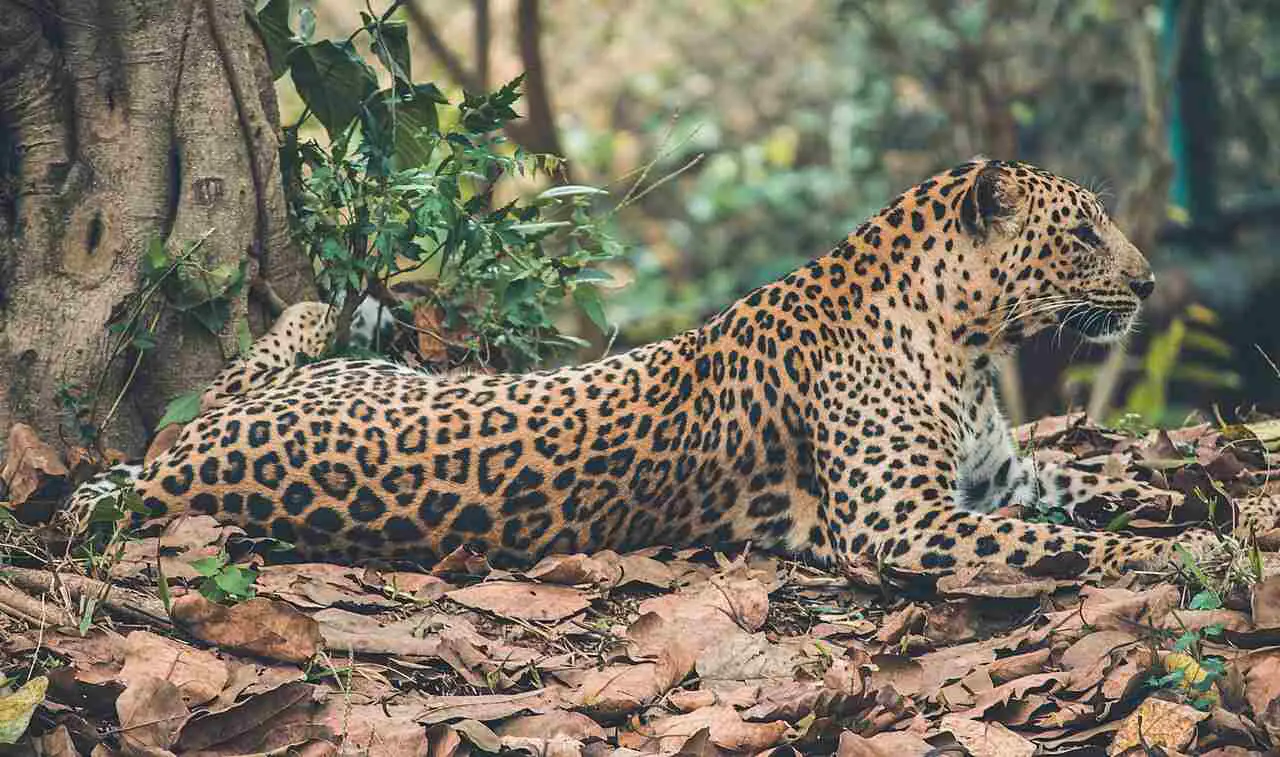
Conclusion
I). SIMILARITIES
When comparing leopards and cougars, it is evident that these big cats share several similarities. Both species belong to the same family, Felidae, and are known for their incredible strength and agility. They are solitary animals that rely on stealth and camouflage to hunt their prey. Additionally, both leopards and cougars have adapted to a wide range of habitats, from dense forests to open grasslands.
II). DIFFERENCES
Despite their similarities, there are also notable differences between leopards and cougars. One key difference lies in their physical characteristics. Leopards have a distinctive spotted coat, while cougars have a solid tan or brown coloration. In terms of size, leopards are generally smaller and more compact, whereas cougars are larger and more muscular.
Another significant difference is their geographic distribution. Leopards are found in various parts of Africa and Asia, while cougars are native to the Americas. This difference in habitat has also influenced their behavior and hunting strategies. Leopards are known for their ability to climb trees and drag their prey up into the branches, while cougars are skilled ambush predators that rely on stealth and surprise to capture their prey.
